Engraven Upon Plates, Printed Upon Paper: Textual and Narrative Structures of the Book of Mormon
$24.95
Now Available!

Companion volume: The Plates of Mormon: A Book of Mormon Study Edition Based on Textual and Narrative Structures in the English Translation
- “There is no more intelligent or systematic analysis of the Book of Mormon's composition, translation, structure, themes, and purposes than Brant Gardner's Engraven Upon Plates, Printed Upon Paper.” — Don Bradley
- “This expansive study immediately rises to the top of must-read resources relative to the Book of Mormon.” — Kerry Hull
- “Any reader seeking a deeper insight into construction and realization of the Book of Mormon text will find much to admire in this project.” — Nicholas J. Frederick
- “No one person has made a more thorough attempt to account for all the historical dimensions of the Book of Mormon.” — Joseph M. Spencer
- “Yields an array of insights into the Book of Mormon as we have it today. . . . Every one interested in the origins, composition, and purpose of the text should carefully consider each of the textual layers Garder has identified.” — Neal Rappleye



Available in ebook for Kindle, Apple, Google Play, and Kobo.
Also available through Deseret Book and Amazon.
Download a free sample preview.
Book Description:
In Engraven Upon Plates, Printed Upon Paper: Textual and Narrative Structures of the Book of Mormon, author Brant A Gardner delves into the intriguing layers of composition and historical context of the Book of Mormon. While taking seriously the implications for what it means for this book of scripture to be a translation of an ancient record written by historical persons, Gardner explores the translation process of the Book of Mormon, analyzing three compositional layers: the nineteenth-century text, the Nephite Book of Mormon, and the Nephite writers and their sources. This work contributes to a deeper understanding of the origins and compositional history of the Book of Mormon, without aiming to serve as an apologetic defense.
Comprehensive Table of Contents:
.
Introduction
Section I: The Nineteenth-Century Text
1. Joseph and Translation
A Divinely Infallible Translation?
A Divine, or Divine-adjacent, Translator?
Joseph Smith as the Agent of Translation?
Presence of Joseph in the Translation of the Bible
Presence of Joseph in the Translation of the Book of Abraham
Presence of Joseph in the Text of the Revelations
Allowing for Joseph’s Presence in the Translation of the Book of Mormon
2. Nineteenth-Century Influence on the Text
The Book of Mormon Reception Audience
The King James Bible and Book of Mormon Language
Quoting the King James Bible
Alluding to the King James Bible
The How and Why of the New Testament Quotations
3. Translation Artifacts in the English Text
Language-based Anachronisms
The Use of “Christ” as a Name
Fulfilled Prophecy and Translation
Spontaneity in the Dictated Text
Sentences Correcting Their Own Errors
Incomplete Sentences
Incomplete Sentences Corrected by Repetitive Resumption
Incomplete Sentences Left Without Resolution
4. Translating Meaning
Section II: The Nephite Book of Mormon
5. A Written Original Behind the Translation
6. Structuring the Text
Book of Mormon Chapters
Sermon Endings May End Chapters
Testificatory Amen Endings
Anomalous and Missing Chapter Breaks
The Original Book and Chapter Headers
Textual Markers In Lieu of Punctuation
Paratextual Function of “And Now” and “And It Came To Pass”
Paratextual Function of “And” and “Now”
Nephi1’s Internal Story Demarcation
7. Influence of the Assumed Audience
Scriptures, Audience, and the Isaiah Chapters
8. Interweaving Names and Narrative
9. Preserved Orality in Nephite Literature
Privileging Orality within Texts
Evidence of Memorized Texts
Discourse as Retention of Oral Sensibilities
Redundancy in Orality
Leitwort
Chiasmus
Literary Parallelisms
Sayings
Stereotyping
Dyadic Pairs
Diphrastic Kennings
10. Blocks of Time
Ending Chapters on Five-Year Intervals
Time-sets and Prophecy
Section III: Nephite Writers and Their Sources
11. Reconstructing the Final Nephite Archive
Large and Small Plates
Brass Plates
Plates of Ether
Record of Zeniff
Record of Alma1
Personal Record of Alma2
Personal Record of Nephi3
12. The Structure of the Large Plates
Chronological Organization
Individual Named Books within the Book of Mormon
Books of the Small Plates
The Reigns of Kings and Judges
The Books of 3 and 4 Nephi
13. Nephi1’s and Jacob’s Use of Source Texts
Nephi1’s Use of Scripture
Nephi1’s Introduction to Isaiah in 2 Nephi
Nephi1’s Prophetic Pesher on Isaiah in 2 Nephi
Jacob and Sources
14. Mormon’s Use of Source Texts
Mormon, Sources, and History
Mormon’s Two Overarching Purposes
Showing that Jesus Is the Christ, the Eternal God
Showing Unto the Remnant of the House of Israel What Great Things the Lord Hath Done
Historical Consciousness and Things that Repeat
Thematic Parallels Beginning in the Lost Pages
15. Mormon’s Appendix
Q&A with the Author:
.
Q: With The Plates of Mormon and Engraven Upon Plates, Printed Upon Paper you have now published ten volumes on the Book of Mormon. What started you on your own path in Book of Mormon studies, and is there a particular approach to the text that you like to focus on?
A: The most definable beginning point was when I was asked to do a weekly online article on the Book of Mormon. I decided to do an in-depth commentary that used Mesoamerica (my academic emphasis) as a plausible background. That project became Second Witness some twelve years later.
I take the Book of Mormon’s claims about itself seriously. For me, that means I can ask why a particular author wrote what he did in the order he did and apply human logic and understanding to the process. Too often believers in the text assume that we have the text because God wanted it that way. That isn’t the way the Bible was created, and that isn’t the process described in the Book of Mormon. That doesn’t preclude inspiration—but that inspiration always came to and through human hands.
Q: What is the relationship between Plates and Engraven? Did you begin one before the other, or were they conceived and worked on simultaneously?
A: That is a hard and complicated question. I worked on many of the ideas that resulted in the way Plates is formatted prior to beginning that project. However, after it's first iteration, the manuscript sat on my hard drive for at least a year. Engraven was started after that, but I worked on a revision of my original work on Plates about the same time.
Q: How does The Plates of Mormon differ from other study editions of the Book of Mormon?
A: Most study editions begin with either the most recent version under Church copyright or the public domain 1920 edition, and they are generally focused on devotional study with interpretive commentary for that purpose. Royal Skousen’s The Earliest Text is the closest to what I am doing with Plates, but there are still differences. Skousen’s book attempts to get back to the dictation and presents the text as “sense-lines” void of punctuation and formatting.
This edition differs from all others in that it has sought to present the text as its primary author and editor, Mormon, conceived of his book. As many are aware, when the Printer's Manuscript was handed over to Grandin Print Shop for publication, it was a flowing text that lacked not only punctuation and uniform capitalization but also any clear distinction between book titles, headers, and paragraphs. Those were all added by Grandin's compositor John Gilbert and have largely remained as they were since that first 1830 edition. Plates seeks to revise Gilbert's work by taking the raw text of the Book of Mormon and modifying both its sentence construction and presentation based on literary and textual structures within the text. For example, there are also some textual markers that I believe were inherited from the original Nephite text that were remnants of a culture in transition from an oral to a literature culture. “And it came to pass” has come to have a much more important meaning for me, and I wish we would restore those few times that the phrase has been removed. In general, I find I like the manuscript version of the Book of Mormon better than the modern edition which has made a few slight changes.
Furthermore, it seems rather clear that Mormon was not anticipating Martin Harris's unfortunate loss of the so-called lost 116 pages and the subsequent use of the small plates of Nephi to replace the missing text. Thus, this edition has moved the small plates' text to the back as Mormon himself intended (similar to appendices in modern books), with his Words to introduce the "great things written upon them." I believe reading the small plates in this context highlights the unique and different role Nephi and others had for their writings that we might otherwise miss by reading them as an intentional beginning to the Book of Mormon.
Q: Is there anything in particular about the Book of Mormon that stuck out to you while you were working on these books that you hadn’t fully recognized before?
A: Almost every time I approach the Book of Mormon, I am learning things I hadn’t seen before. I had previously understood the narrative function of “and it came to pass,” but working on Plates brought out the companion phrase “and now” which works in conjunction with “and it came to pass” to move the action of the text through time, or to show events happening during the same time.
Engraven is pretty much all things I have learned about the text, though some of the ideas have been cooking for a long time and some have seen light in different ways.
Q: What was the biggest challenge you faced while punctuating and formatting the Printer’s Manuscript for The Plates of Mormon?
A: Staying awake? What a generally boring task! It was fascinating to learn that after however many times I have read the Book of Mormon and how many times I have tried to read it closely—there were new things that I had never seen before. Sometimes it was incomplete sentences. In one case, it was an unfortunate punctuation that created the strange statement that Christ had never shown himself on earth. That one is still in the current text! I note it in the Introduction to Plates, so maybe we can get people to read at least the introduction to find out which verse.
Q: In Engraven Upon Plates, Printed Upon Paper you lean in heavily on Mormon, Nephi, and others being very real persons working very real records. Are there any implications of this approach that previous scholars of the Book of Mormon haven’t fully considered?
A: I think the question pertains more to a believing audience than an academic one. The non-believing academics can read as though there were real writers, but it is a convenient fiction. For believers, I think the difference is that many accept that there were real people, but have them sacralized almost to the point where they are sacred symbols more than human writers. By accepting Mormon, Nephi, and others as real writers, we can look at how they accomplished their work without assuming that that they were merely puppets controlled by the divine hand.
Q: What from these books do you hope that those who do not believe in the ancient historicity of the Book of Mormon can nevertheless find valuable and insightful to their understanding of that book of scripture?
A: Plates of Mormon allows the easier answer. That book can be used as a tool to understand the text of the Book of Mormon as it was presented in 1829.
Because Engraven divides the text into creative layers. The modern translation layer is where most nonbelieving academics spend their time. However, the whole text is essentially descriptive without declaring that those descriptions prove historicity. I assume it in the way I categorize the elements examined, but those elements can be examined and understood quite apart from the boxes in which I have placed them.
Praise for Engraven Upon Plates, Printed Upon Paper:
“Brilliant. The best book for understanding the Restoration's "most correct book." There is no more intelligent or systematic analysis of the Book of Mormon's composition, translation, structure, themes, and purposes than Brant Gardner's Engraven Upon Plates, Printed Upon Paper.” — Don Bradley, author, The Lost 116 Pages: Reconstructing the Book of Mormon's Missing Stories
“Brant Gardner has long been at the head of Book of Mormon studies. With his new book, Engraven Upon Plates, Printed Upon Paper, he adds to his lengthy resume by deconstructing one of the more vexing issues in Book of Mormon studies, namely how to understand the complicated relationship between the Nephite Gold Plates and the nineteenth-century English Book of Mormon. Gardner provides careful analysis of by what means Joseph Smith may have translated the plates, how the Nephite authors may have conceived their project, and in what way those Nephite authors may have integrated their own sources into their record. Any reader seeking a deeper insight into construction and realization of the Book of Mormon text will find much to admire in this project.” — Nicholas J. Frederick, Associate Professor of Ancient Scripture, Brigham Young University, and author of The Bible, Mormon Scripture, and the “Rhetoric of Allusivity”
“Written as a companion to The Plates of Mormon: A Book of Mormon Study Edition Based on Textual and Narrative Structures in the English Translation, this volume bristles with insights gained through a detailed reading of the text. It represents one of the most thorough and substantive treatments of the nature of the translation, transmission, and organizational design of the Book of Mormon text to-date. This expansive study immediately rises to the top of must-read resources relative to the Book of Mormon.” — Kerry Hull, co-editor, A Hundredth Part: Exploring the History and Teachings of the Book of Mormon
“In this new book, Brant Gardner provides a systematization of his decades of labor placing the Book of Mormon squarely in history. No one person has made a more thorough attempt to account for all the historical dimensions of the Book of Mormon: the antiquity of the gold plates, but also the deeper antiquity of the sources for the Book of Mormon's authors and the modernity of its translation. This book puts a capstone on decades of work.” — Joseph M. Spencer, author of The Vision of All: Twenty-five Lectures on Isaiah in Nephi’s Record and The Anatomy of Book of Mormon Theology
“Over the last 15 years, Brant Gardner has established himself as one of the most important voices in Book of Mormon studies by refusing to accept overly simplified dichotomies about the text and its origins. Instead, he carefully scrutinizes textual, historical, and cultural data for relevant clues, and then carefully puts the pieces together. His latest work, Engraven Upon Plates, Printed Upon Paper, is no different. Rather than fall into the trap of “all ancient” or “all modern,” he parses the layers of the text seeking to separate the modern artifacts of translation from the plate text, and then goes further still in sifting out the sources behind the plate text. The resulting analysis yields an array of insights into the Book of Mormon as we have it today. Going forward, every one interested in the origins, composition, and purpose of the text should carefully consider each of the textual layers Gardner has identified.” — Neal Rappleye, researcher and writer at Scripture Central
About the Author:

earned his M.S. in anthropology (specializing in Mesoamerican ethnohistory) from the State University of New York at Albany. He is the author of the six-volume Second Witness: Analytical and Contextual Commentary on the Book of Mormon, The Gift and Power: Translating the Book of Mormon, and Traditions of the Fathers: The Book of Mormon as History. He has presented papers at the Foundation for Apologetic Information and Research (FAIR), the Book of Mormon Archaeological Symposium, and Sunstone. His other published works include chapters in Estudios de Cultura Nahuatl and Symbol and Meaning beyond the Closed Community: Essays in Mesoamerican Ideas, and articles in the FARMS Review, Sunstone, The Interpreter, and Meridian Magazine.
More Information:
262 pages
ISBN: 978-1-58958-800-4 (paperback)




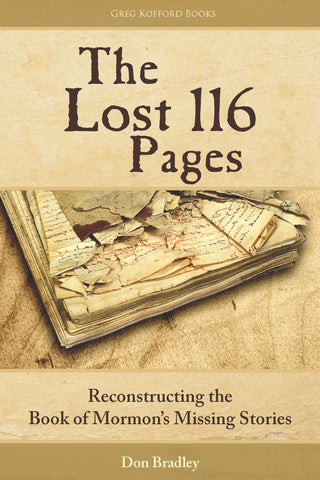
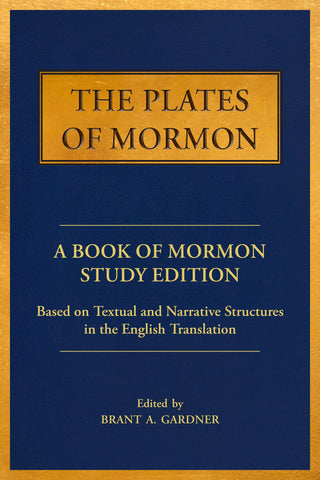
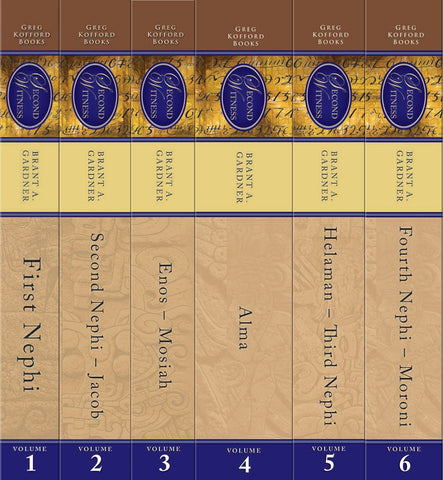
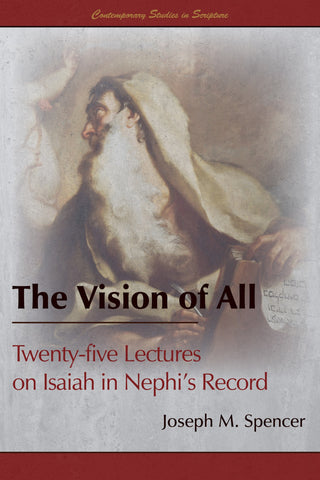
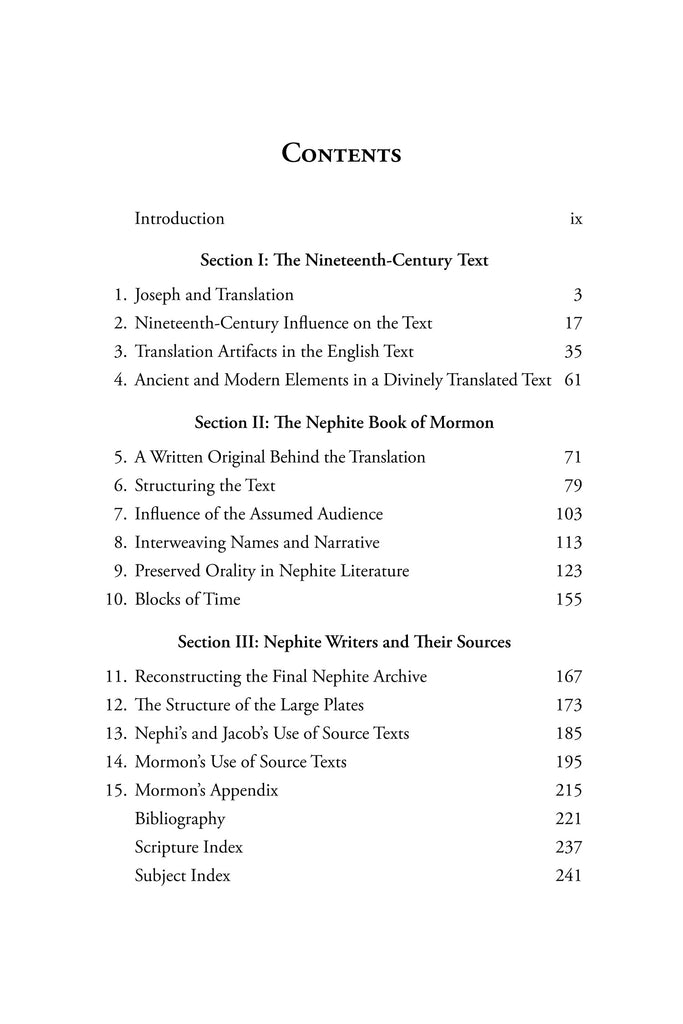
Share this item: